Swarovski Optik AX Visio 10x32 binoculars review: these great AI smarts don't come cheap
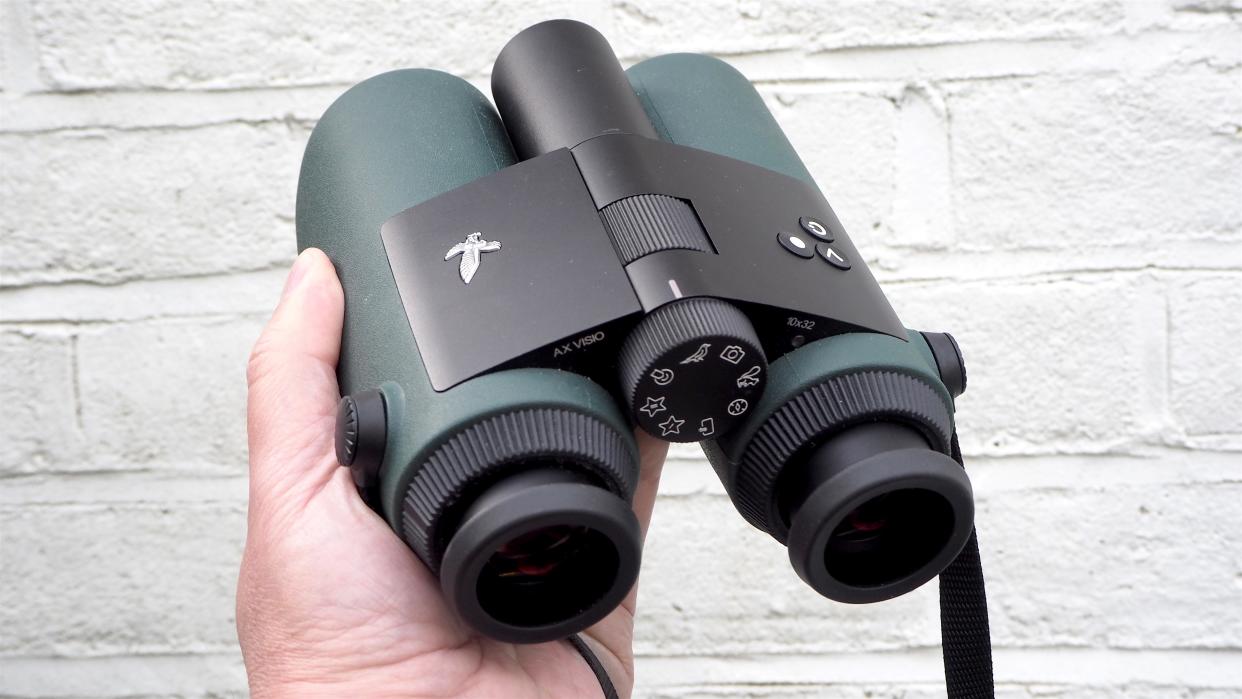
Jump to:
Specifications
Key Features
Design & Handling
Performance
Verdict
Alternatives
Ever spotted a bird or other creature in the wild and wondered what it was? Or had half a suspicion but couldn’t confirm your hunch, before it flitted away?
Of course, we could theoretically just search it up on our smartphone, if we could input enough information for the search engine to play nicely. But how much handier would it be if the binoculars we were using could simply tell us there and then? Sounds like something from the future. However, thanks to what it’s classifying as built-in AI, the latest binocular from premium optical brand Swarovski suggests it can do exactly that, in the present.
In fact, Swarovski claims the AX Visio 10x32 device we’re testing out here is the world’s first AI-supported ‘smart’ binocular, which, if successful, we can envisage starting a trend. Especially as the technology gets more affordable and quicker and Artificial Intelligence continues to squirrel its way into every aspect of our lives.
So what we have here is a heady combination of high-quality 10x32 binoculars and software that can theoretically identify what we’re observing at the touch of a button. Add in a built-in camera that can capture what we’re seeing when we see it and it all adds up to an enticing proposition.
The only immediate caveat is that such cutting-edge features don’t come cheap. If it’s photos and videos of skittish creatures that are a priority, we could buy a top-end mirrorless camera plus a telephoto lens for a similar price to what’s being asked here. Comparable high-performance binoculars without the identification software can alternatively be had for quite a bit less. It’s fair to say that this is a flagship product on the cutting edge of innovation presently… but who exactly is it for?
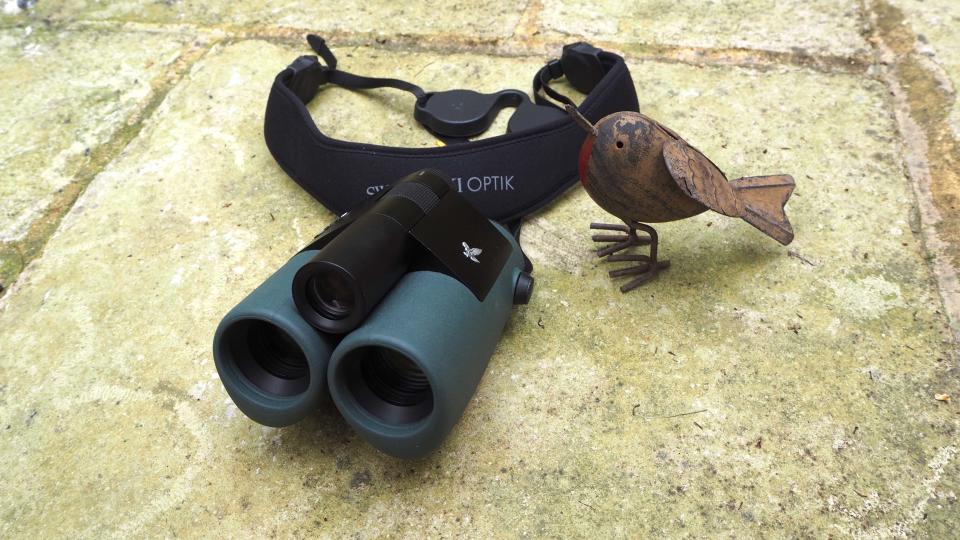
Swarovski Optik AX Visio: Specifications
Swarovski Optik AX Visio: Key Features
If we were talking about any other binocular we’d be focusing on the core essentials of the Swarovski AX Visio 10x32. Namely, it's pretty standard yet useful 10x magnification and 32mm objective lens, coupled with, of course, the optical expertise that Swarovski is renowned for and which has made it a premium choice for enthusiasts and pros.
Here that optical expertise is blended with digital know-how, which means there is a little more for us to immediately get to grips when the unit is taken out of the box, compared with a strictly analog binocular that we could just pick up and be intuitively using in seconds. That said, we are able to just leave the binoculars switched off and use them in the same fashion as we would any very high-quality optic. In this respect, they also excel.
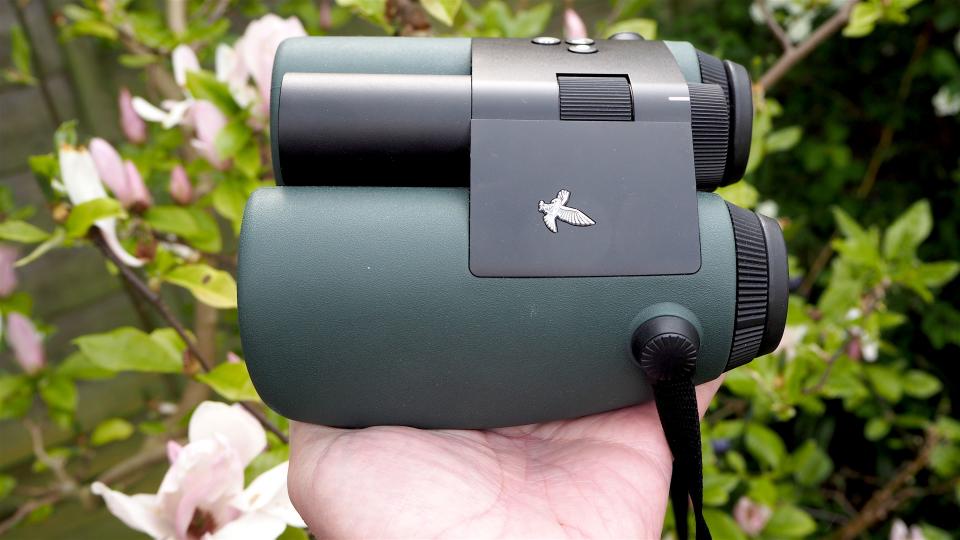
But of course, the major selling point and the real reason for the wallet-busting price tag is that the Swarovski AX Visio 10x32 lays claim to being able to identify up to 9,000 birds and other wildlife while featuring the option to take quick snaps or bursts of up to Full HD quality video to record the moment. In conjunction with a Swarovski Optik Outdoor App that we need to first download and use to pair our smart devices, these images can then be uploaded and shared via a smartphone.
Additionally, a ‘Share Discoveries’ option allows users to guide another person to an observed object, via arrow markers in the eyepiece display. Otherwise, all device settings are carried out via the app, and future updates will likewise be supplied in this way, promising, says its maker, a potential product life cycle of ‘many years’.
Swarovski Optik AX Visio: Design & Handling
You’d imagine that with the high-quality optics and additional technology on board the Austrian-made Swarovski AX Visio 10x32 is chunky and weighty for its class. And yes, it’s certainly both. In fact it weighs over 1kg (2.2lbs) without its chunky rechargeable battery, for which a separate mains charger is handily provided. Imagine karting around a bag of sugar with you and you’ll get the idea. Thankfully in practice, the neck/shoulder strap provided is both padded and comfortable.
While it feels like this one is more about function than form, flourishes from industrial designer Marc Newson include large egg-shaped rubber rims protecting the glass at the front, with a rubberized surface aiding grip in the wet as well as providing a tactile, comfortable feel.
Talking of the device’s ability to be able to operate in most weathers, it purports to be able to function down to -10°C or up to 50°C plus, though during a drizzly April/May test period temperatures didn’t dip much lower than 10°C or get higher than 20°C.
Slip-on rubber caps protecting the glass at the front and back are provided, with the ones that tightly hug the eyepieces able to be tethered to the comfortably padded neck/shoulder strap included. Also bundled along with strap, eye, and lens caps out of the box is the aforementioned Swarovski branded mains charger for replenishing the battery outside of the device itself, plus a USB cable with which to hook it up to the mains. Although an actual main plug didn’t come with our review sample, most of us will have a compatible one already for our smartphone or tablet we can make use of.
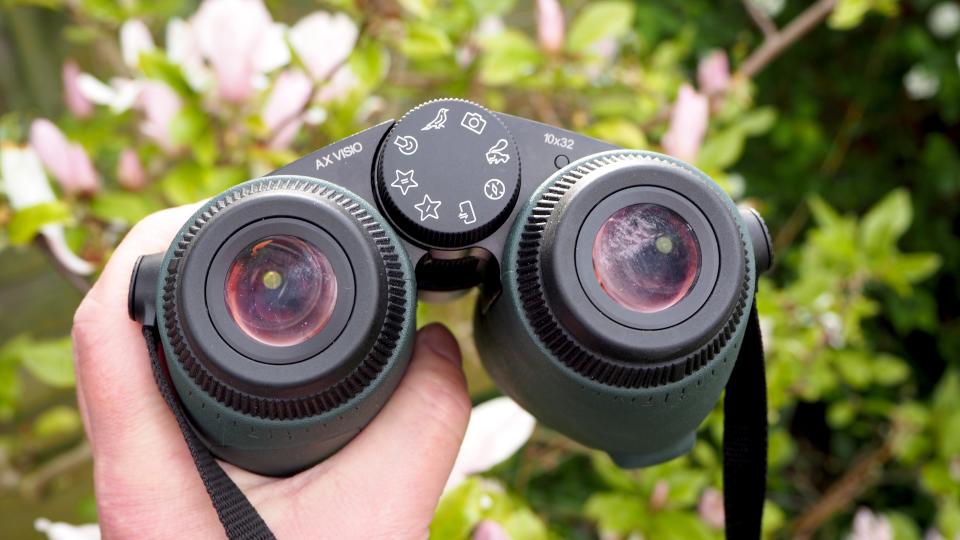
One thing we had to get our head around after the hype that preceded this device’s arrival and which wasn’t immediately obvious from the press release, is that the view we are getting via the eyepieces is exactly the same as that provided by a very high-quality binocular. We’re not looking at a separate digital viewfinder or flip-up screen to be provided with subject identifications, as we might expect from the initial spec.
Simply put, when we turn the selection wheel located just above and centered between the eyepieces, a different and corresponding digital overlay appears within the eyepieces themselves. We then need to center the circle or the frame provided over the bird or animal we’re attempting to identify – lining the creature up in our sights in effect.
There are three operational buttons atop the binocular, one being an obvious power button that we need to hold down for a couple of seconds before the unit activates. A small LED lamp then flashes green and, once it’s stopped flashing for a few seconds more and stays a solid green, we’re ready to go. As there is a bit of a wait for it to power up, we found it’s better to have the binoculars already activated if we anticipate needing them for identification, so as not to miss an opportunity,
Another that isn’t obvious at first is that it’s a camera lens that is located at the front, indicated by the slim black metal tube sitting between and resting atop the eyepieces. One of the three buttons that we would normally press to identify a subject once we’d lined it up in our frame is therefore revealed to double up a shutter release button. If turning the selection wheel to the camera icon, we can use the single arrow key atop the device to toggle between either recording video or shooting a still.
There’s no obvious port for inserting a microSD card however for the saving of images as we might reasonably expect, given such attributes. To access any images we need to first pair our smartphone with the device via Swarovski’s dedicated app, once downloaded to our handset, and proceed that way. In this way, we can then import stills and videos from the device to our phone, for sharing or preserving. Space for a microSD card, perhaps within the battery compartment to preserve its weather resistance, might have been nice as an alternative however.
Swarovski Optik AX Visio: Performance
Even used as a regular pair of binoculars without the digital elements engaged, the Swarovski AX Visio 10x32 reveals its inherent class, the view provided being impressively bright and sharp with it, to a degree that is almost a little dazzling at first. It’s like going to the opticians with the suspicion that you need new glasses, and then everything suddenly snapping into focus when you receive that new prescription. A familiar focus knob is provided atop the device where it sits centrally located between the eyepieces and readily accessible by your forefinger.
Less familiar is the mode wheel that sits just behind it, and the closest to our eyes, which resembles the shooting mode wheel on a digital camera. Indeed it has a familiar camera icon, as well as equally identifiable functions denoted by a bird and a squirrel graphic. Stay with the bird icon for Merlin Bird ID support when the binocular is active, obviously, if you want the device to tell you the name of the bird you’re observing, or turn it to the wildlife setting if you want to identify an animal/mammal.
Further symbols on the same selection wheel provide access to an onboard compass, as well as two customizable settings denoted by star symbols that provide shortcuts to optional additional apps, or connection with an external third-party app if we really want to maximize usability.
Interestingly the eyecups are not only adjustable, but they feature a stepping ring type action whereby up to seven different positions are selectable, with an audible click indicating you’ve subsequently arrived at each one. Unusually, there’s also a dioptric adjustment wheel on each eyepiece, not just the one, so we can make further precise adjustments if one eye is stronger or weaker than the other. Otherwise, we found that simply rotating the central focus knob, as we normally would, produced an impressive and sharply defined view.
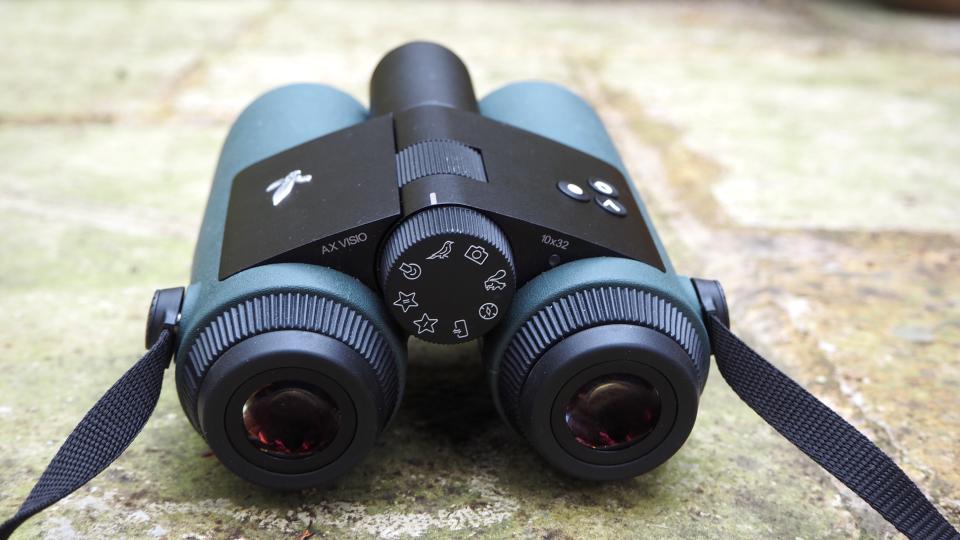
Inevitably though it has a high hit rate, the device and its software aren’t infallible as far as identifying every type of wildlife goes. While it correctly identified the likes of Egyptian geese, a mute swan, mallard, Mandarin duck, and rock pigeons flitting around our local pond, instead of training its focus on a freshwater turtle that was static and sunning itself proved a test too far. Granted, there isn't a dedicated setting for amphibians, but we were greatly amused when the device told us that we were at first looking at a fallow deer, and then, when we re-framed, re-focused and tried again, a freshwater beaver (closer).
Still, we were impressed that we could correctly identify wildfowl even when looking at birds from the back for example, without perhaps the more clearly identifiable head markings visible, and also got it right when there were reeds or other natural materials partly obscuring our view.
We found that the identification process works best however when including the whole body in our frame; getting close enough that we could fill the whole of our eyepiece with just the head of, say, a swan, gave us an error message that there was no bird to identify. It requires a brief process of trial and error and familiarisation on behalf of the user to get everything working to optimum effect, as we’ve noted.
On a practical level though, being able to identify a bird or creature and then immediately turn the dial to the camera setting to take a picture, or video of it, is a real godsend. We’re getting a binocular, a camera, and a portable portfolio of wildlife in one.
Swarovski Optik AX Visio: Verdict
OK, so is the ’smart’ Swarovski AX Visio 10x32’s eye-watering price tag value for money? Well, it very much depends on how deep your pockets go. What we’re getting here is a very well-made, unique-at-the-time product, that is on the cutting edge of what is currently possible, meaning it will very much appeal to early adopters prepared to pay a premium for such innovation.
If you’re not bothered about the technological gubbins on board and have your own pocketbook of common birds with which to pinpoint most species, then for a more affordable outlay it’s possible to pick up just as high-quality a device, most notably from Swarovski itself. If you do that, then perhaps put the rest of the savings towards a safari holiday on which to use said binoculars to best effect.
That said, what we’re getting here is not only a whole lot of technology but a whole lot of fun with it.

Alternatives
While the Swarovski AX Visio 10x32 is very much one-of-a-kind at the time of writing, it does seem to point the way to things to come, especially now that smartphones are the center of our universe when it comes to communication and, to an extent, simply conducting our day-to-day business. If, alternatively, we already have our own knowledge of birds and animals and can identify most species for ourselves, then it makes sense to opt for a less expensive analog binocular without all the digital extras on board. Undoubtedly the closest to this option would be a more ‘standard’ binocular from Swarovski itself, such as its 10x32 NL Pure option to pick one with identical core specification.

